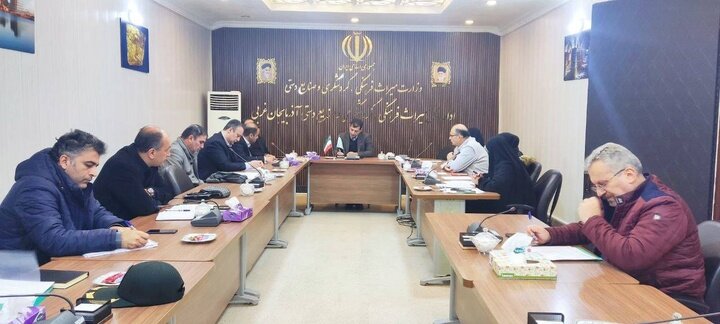Improving border terminals crucial for tourism in West Azarbaijan province

TEHRAN – Morteza Safari, the Director-General of Cultural Heritage, Handicrafts, and Tourism in West Azarbaijan, has underscored the pivotal role of organized border terminals in boosting tourism and ensuring visitor satisfaction at historical and tourist sites of the province.
During a recent meeting of the West Azarbaijan Tourism Committee, Safari emphasized the need for a traveler-friendly experience starting from their arrival in the country. Proposing aesthetically designed border terminals equipped with billboards showcasing tourist attractions and citywide TVs for a captivating atmosphere, Safari also suggested the presence of guides to introduce visitors to the potential of the province.
Recognizing borders as the country's gateways, Safari highlighted the potential negative impact of bad experiences and unsightly environments on deterring travelers from choosing Iran as their destination.
The importance of improving road infrastructure to attract tourists, particularly along routes leading to historical and tourist attractions, was also stressed by Safari.
Emphasizing the province's annual influx of travelers passing through West Azarbaijan, Safari suggested creating recreational and tourist facilities to encourage longer stays in the province. He urged the promotion of the region's potential by relevant authorities and tourism activists.
West Azarbaijan, renowned for its unique historical artifacts and tourist attractions, hosts visitors from across the globe annually. The province's five terminals, including Sarv in Urmia, Razi in Khoy, Bazargan Maku on the Turkey border, Sanam Blaghi Poldasht on the Nakhchivan border, and Tamarchin Piranshahr on the northern Iraq border, witness millions of travelers, primarily from Asia, Europe, West Asia, and some East and Southeast Asian countries.
In the view of experts and commentators, border terminals serve as the initial showcase of a country for foreign visitors and should be aesthetically pleasing to attract more tourists.
West Azarbaijan province, whose capital and largest city is Urmia, is bordered by Turkey, Iraq, and Azarbaijan’s Nakhchivan Autonomous Republic, as well as the provinces of East Azarbaijan, Zanjan and Kurdistan.
Permanent settlements were established in the province as early as the 6th millennium BC as excavations at sites such as Tepe Hasanlu, yielded a famous golden vase of the same name in 1958.
